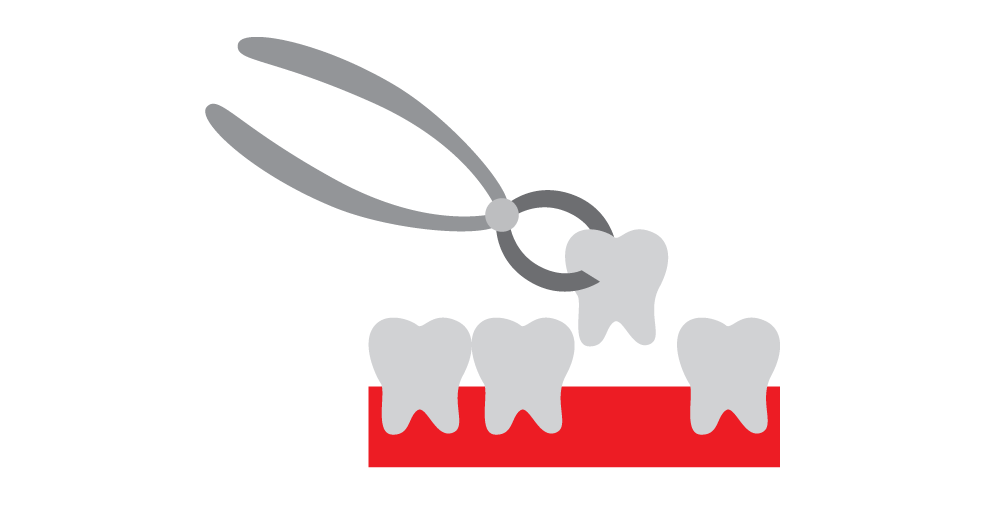Tooth Extraction
A tooth extraction is the removal of a tooth from its socket in the bone. While extractions have been used for many years, today they are usually performed as the last option available in order to save a patient’s gum tissue and avoid an infection that can spread throughout the body if left untreated.
There are two types of tooth extractions. One is called a simple extraction where our dentist removes a tooth that can be seen in the mouth. The other is a surgical extraction. Surgical extractions are required if the tooth has not popped through the gum line and remains embedded inside the gum.
Reasons a patient may need a tooth extraction are varied:
-
Baby teeth are not coming in properly
-
A tooth is too decayed to be treated with a filling, crown or root canal
-
The patient has too many teeth in their mouth
-
To make room for braces, some teeth may need to be removed
-
Gum disease has caused a tooth to become loose and there is no other treatment available
-
Wisdom teeth or back molars need to be removed
Surgical extractions, such as wisdom teeth extractions may require general anesthesia as a scalpel is used to open the gum line to remove the teeth. Surgical extractions generally take longer to heal and may cause more swelling and discolouration along the gum line. Patients almost always require stitches and can be sent home with prescription pain medication afterwards.
Costs for Tooth Extractions vary based on your situation. Please the clinic nearest you to find out your specific costs.
Any surgical or invasive procedure carries risks. Before proceeding, you should seek a second opinion from an appropriately qualified health practitioner.

